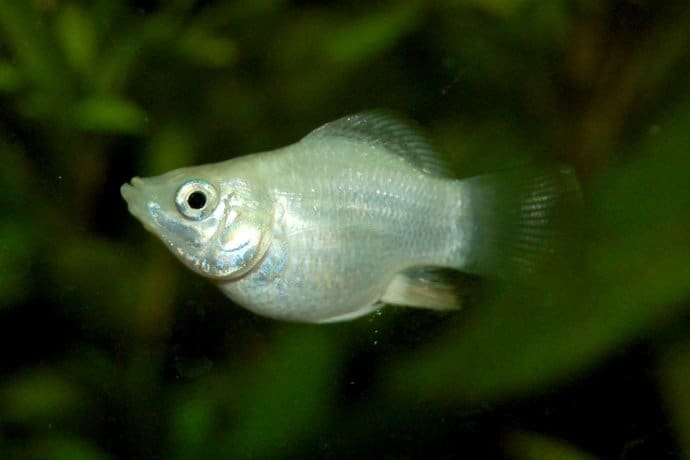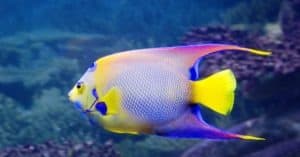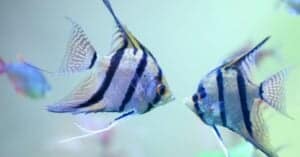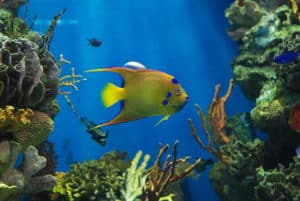Angelfish are popular in aquariums and have been kept as pets for more than a century. The term angelfish is used to describe either marine or freshwater fishes that are known for their impressive colorations and patterns.
Freshwater angelfish are the more commonly owned species, and they are types of cichlids that originate from tropical South American waters. The freshwater angelfish is known for being social and relatively peaceful, which makes them compatible with many other fish and invertebrates. However, the marine angelfish is known for being more territorial, so they have few compatible tank mates.
Therefore, this article will discuss the best tank mates to pair with freshwater angelfish.
Overview of Freshwater Angelfish
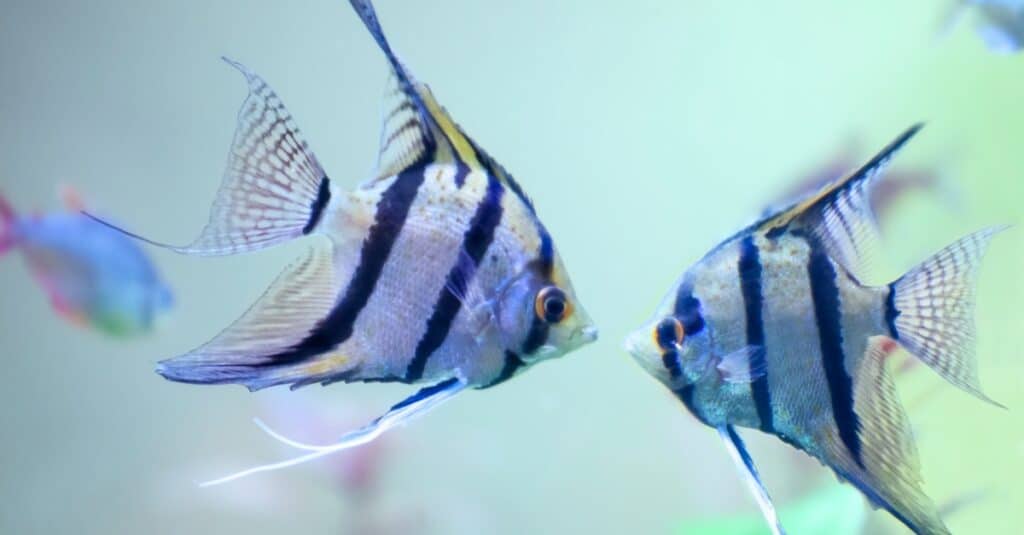
Freshwater angelfish enjoy living alongside other members of their species.
©iStock.com/TatianaMironenko
| Scientific name: | Pterophyllum scalare |
| Origins: | South America |
| Adult size: | 6 to 10 inches |
| Lifespan: | 10 to 12 years |
| Diet: | Omnivores |
| Varieties: | Black lace, zebra, blushing, gold, leopard, and koi. |
What to Consider Before Choosing Tank Mates for Angelfish
Before you decide which tank mates to house with your angelfish, you first need to ensure that the aquarium conditions are ideal.
- Freshwater angelfish are highly social fish that need to be kept in groups of five or more. They form schools in the wild and get easily stressed alone or in pairs.
- Angelfish can grow up to 10 inches in size and require a minimum tank of 55 gallons for a group of five. The more tank mates you keep with them, the larger the tank needs to be.
- There are currently three species of freshwater angelfish in the Pterophyllum genus – P. altum, P. leopoldi, and P. scalare. The P. scalare is the most popular species that is kept as pets.
- You should never mix marine and freshwater angelfish together, even though they share the same name. They are very different fish with significant differences in their size, behavior, and water conditions.
- Lastly, freshwater angelfish need to be kept in heated aquariums. They are tropical fish that thrive at temperatures between 75° to 82° degrees Fahrenheit (23° to 27° Celsius).
Best Tank Mates for Freshwater Angelfish
The best tank mates for freshwater angelfish are other peaceful, tropical, and social fish that thrive within the same water parameters.
They include:
1. Mollies (Poecilia sphenops)
One of the most peaceful fish you can keep with angelfish are mollies, a type of live-bearing fish from the Poeciliidae family. Mollies are freshwater fish that originate from South America, but they can be found in Japan and parts of Eastern Europe. They can be found in a wide range of different colors and patterns and reach an adult size of 2 to 5 inches. Like the angelfish, mollies are incredibly social and need to be kept in groups of five or more to form a shoal.
Mollies are suitable for beginners and their care is relatively simple because they are hardy and adaptable fish. You can easily pair adult mollies with juvenile angelfish, although the tank needs to be over 55 gallons in size. Mollies are not very fussy about their tank setup but appreciate a few live plants and pieces of driftwood.
2. Dwarf Gourami (Trichogaster Lalius)
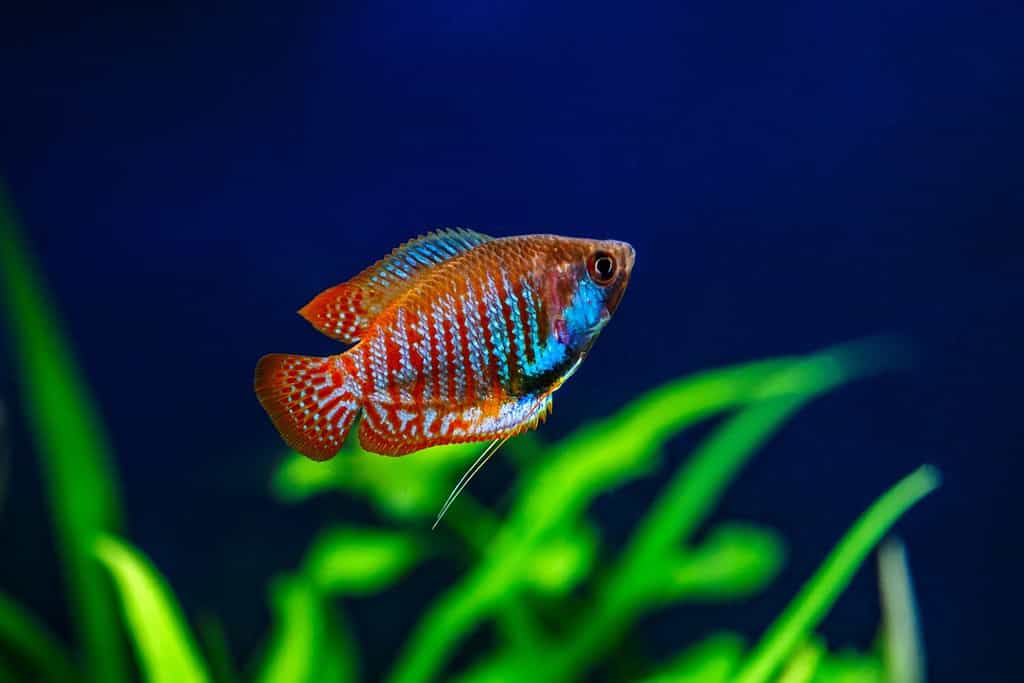
Dwarf gourami can be found in a range of different colors.
©Bukhta Yurii/Shutterstock.com
The dwarf gourami is a small fish of around 3.5 inches in size. They originate from southern Asia, specifically from Pakistan and Bangladesh. Dwarf gourami makes popular additions to aquariums thanks to their fascinating colorations which include neon blue, sunset orange, flame, and rainbow. They belong to the same family as the betta fish, the Osphronemidae family.
As social fish, it is recommended to keep dwarf gourami in groups of five or more. They do not form tight schools but do enjoy interacting with one another.
Both dwarf gourami and angelfish can be kept in the same tank, and their water conditions are similar in many ways. Dwarf gourami and tropical freshwater fish that thrive at temperatures around 72 to 82 degrees Fahrenheit. However, the temperature will need to be kept above 74 degrees Fahrenheit when housing them with angelfish.
3. Zebra Danios (Brachydanio rerio)
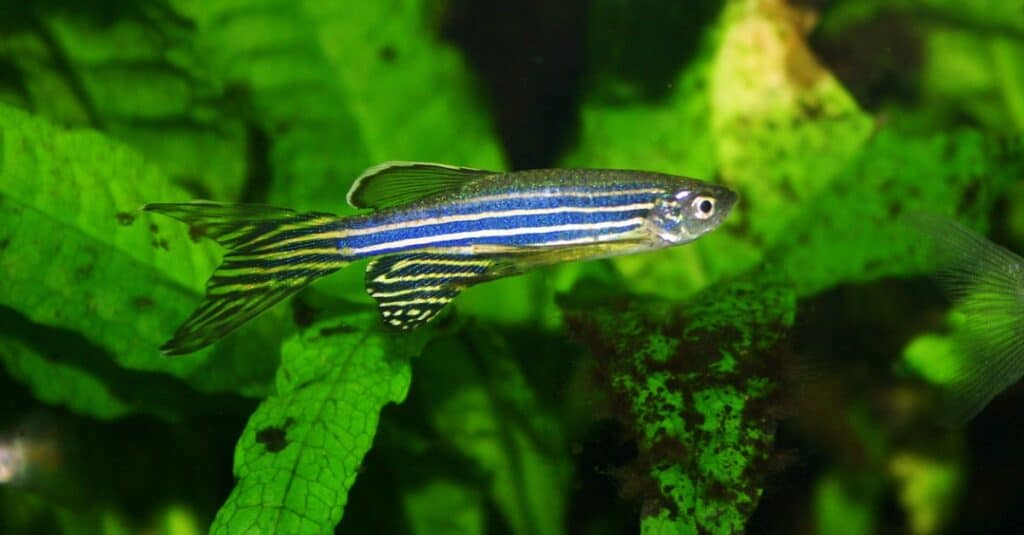
A zebra danio’s stripes make them stand out despite its small size.
©iStock.com/MATTHIASRABBIONE
The zebra danio or zebrafish is a small freshwater fish usually growing no longer than 2.5 inches. They are incredibly active schooling fish that are recognized by their striped bodies. The stripes of a zebra danio can vary in color, but the most popular ones are blue, purple, red, and even green.
Zebra danios originate from southern Asia where they inhabit tropical lakes and streams with plenty of vegetation. These fish are often described as being incredibly hardy as they can adapt to different water parameters. They are not as sensitive to water quality as other similarly sized fish and can tolerate water temperatures as low as 64 degrees Fahrenheit.
If you decide to keep zebra danios with angelfish, only pair them with juveniles, since adult angelfish over 6 inches in size may eat them. It is better to only keep fully grown zebra danios in the same tank as angelfish.
4. Bronze Corydoras (Corydoras aeneus)
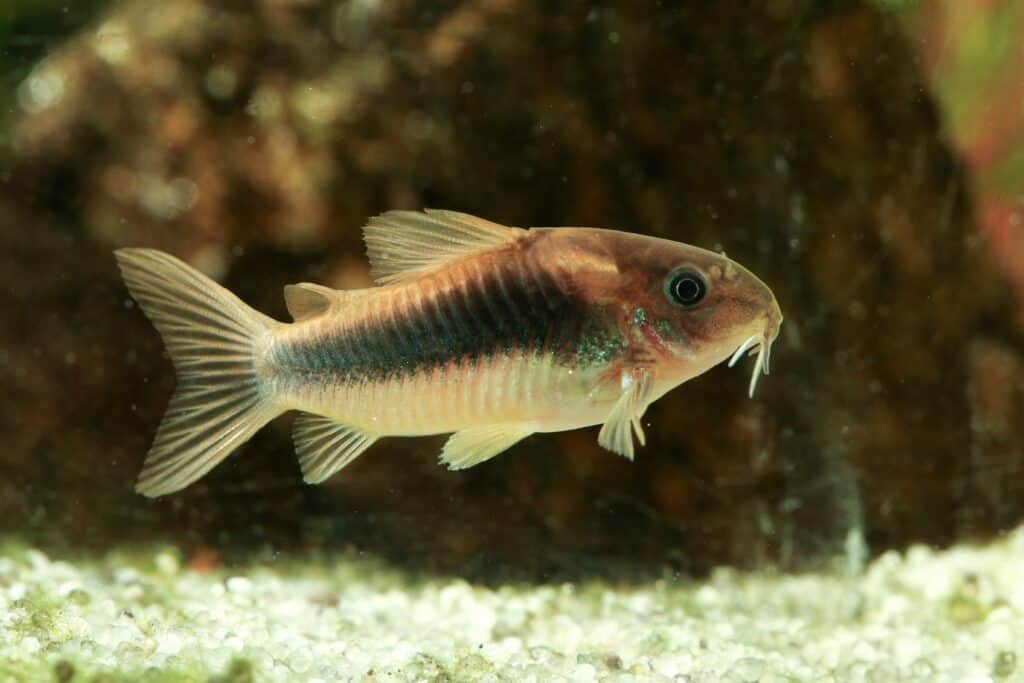
Like many catfish, the bronze cory females are larger than the males.
©Geza Farkas/Shutterstock.com
A group of five bronze corydoras can be a great addition to angelfish aquariums. Bronze corydoras are small bottom-dwelling catfish that originate from South America. They have a relatively small size at only 3.5 long, and a bronze coloration with dark markings on the sides of their bodies. Bronze corydoras have small barbels that they use to forage for food in the substrate. They hardly interact with angelfish because they do not swim at the same level in an aquarium.
It is important to keep bronze corydoras in groups of five or more because they form loose shoals in the wild. Bronze corydoras are quite active fish and help liven up the bottom of angelfish aquariums.
5. Bristlenose Plecostomus (Ancistrus cirrhosus)
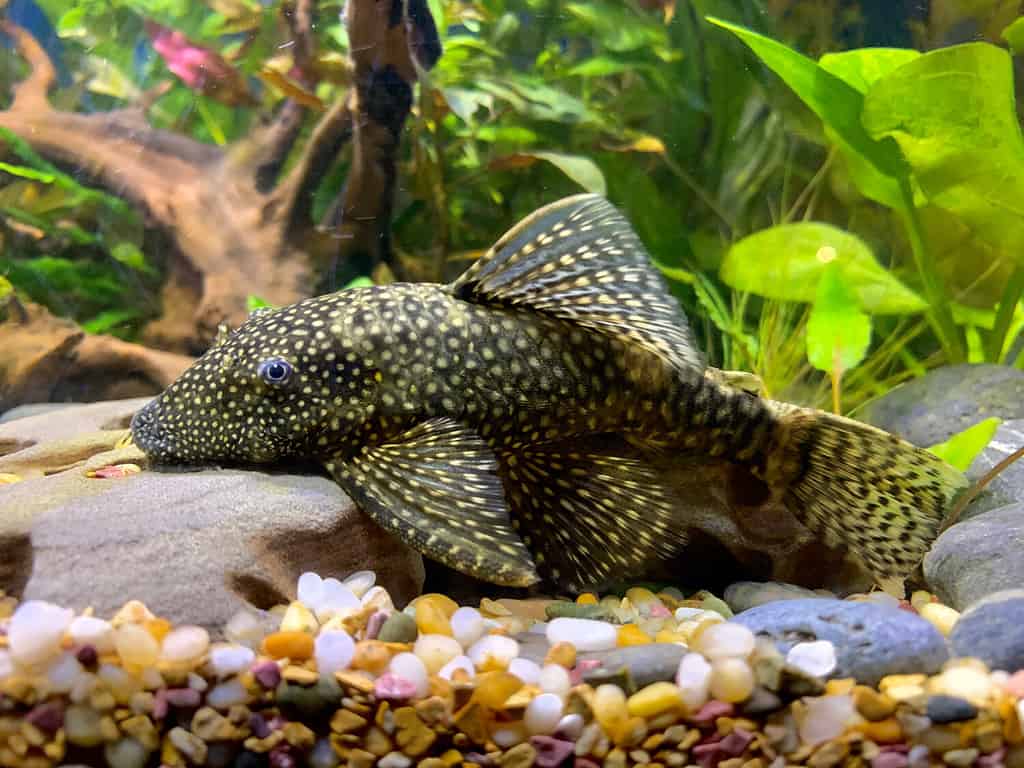
Bristlenose plecos benefit from having driftwood in their aquarium. Driftwood contains fibers that aid in their digestion.
©TTONN/Shutterstock.com
The bristlenose pleco is one of the smaller Plecostomus that can be kept in freshwater aquariums. They hail from South America where they inhabit the tropical conditions in the Amazon River Basin. Bristlenose plecos only reach a maximum length of 6 inches in captivity, although most only grow to 5 inches.
They are distinguished by their tentacle-like growths on their faces, which are only seen in males. Female bristlenose plecos have a smooth snout and more rounded fins. Bristlenose plecos can be found in different varieties, such as albino, green, longfins, and red.
Furthermore, bristlenose plecos do not need to be kept in groups as they are not social fish. Bristlenose plecos can be a bottom-dwelling tank mate for angelfish aquariums if you do not want a tank mate that needs to be kept in groups.
6. Black Skirt Tetras (Gymnocorymbus ternetzi)
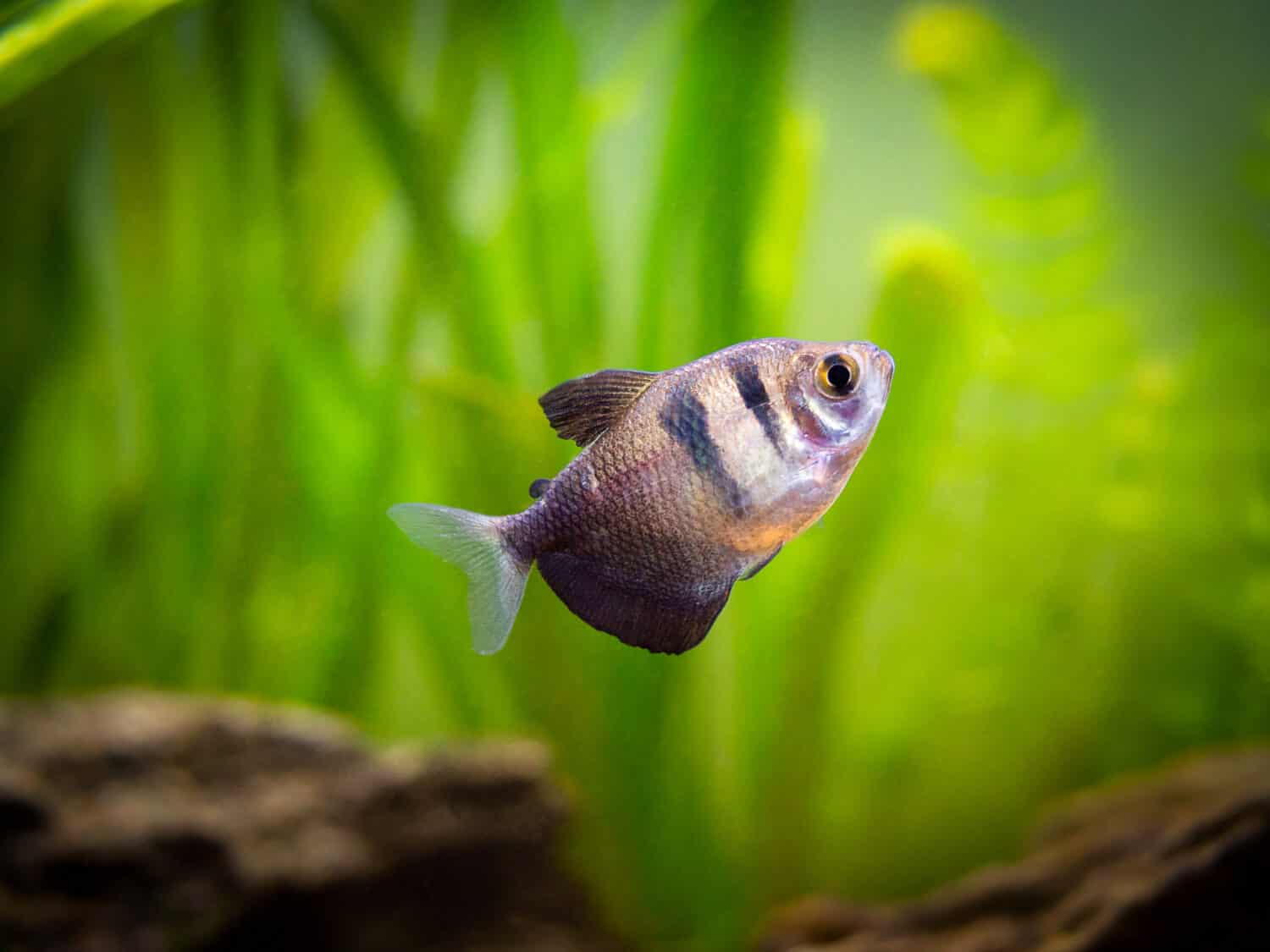
As their name suggests, black skirt tetras are named after their long anal fin that looks like a skirt.
©Joan Carles Juarez/Shutterstock.com
Black skirt tetras share many compatible traits with angelfish that can make them good tank mates. The black skirt tetra is a freshwater fish that has a uniquely shaped tail that looks like a skirt, hence their name. They have dark black and tan colored bodies and reach a maximum adult length of 3 inches.
They are relatively peaceful fish that keep to themselves in aquariums. Black skirt tetras need to be kept in groups of five or more since they become stressed when kept alone. Their ideal water parameters are similar to angelfish, and they require a heated aquarium with plenty of space to swim.
7. Rummy Nose Tetras (Hemigrammus bleheri)
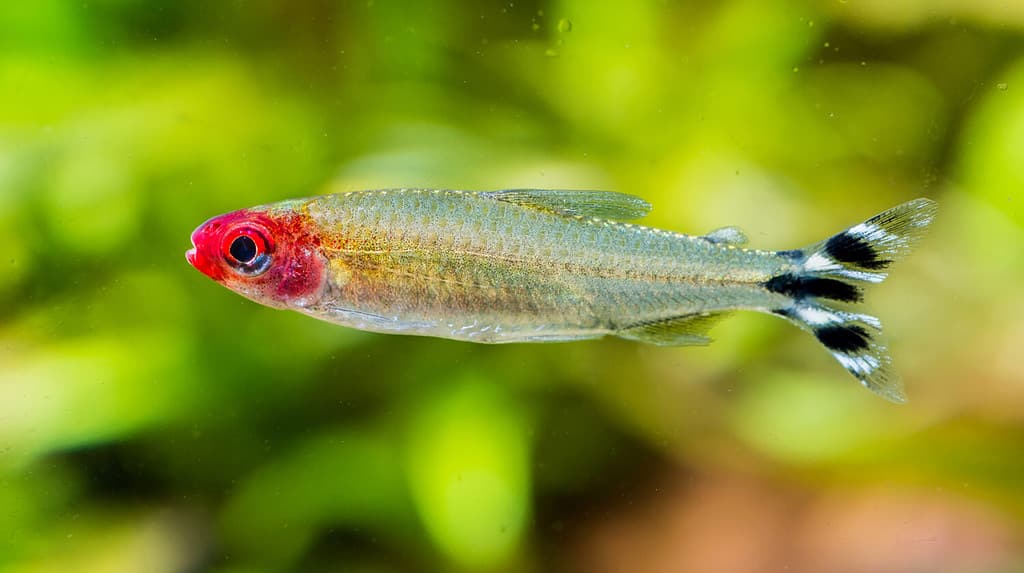
The rummy nose tetra has a red face and zebra-striped caudal fin.
©Ian Grainger/Shutterstock.com
Rummy nose tetras are popular aquarium fish that originate from the Amazon River Basin in South America. There are three species that are referred to as rummy nose tetras, including the Hemigrammus rhodostomus, H. bleheri, and the Petitella georgiae.
The H. bleheri is the one that is commonly found in pet stores under the common name brilliant rummy nose tetra. They have a fascinating appearance with distinctive red blotches on their face. Their caudal (tail) fin has a zebra-like pattern which makes them stand out. Rummy nose tetras only grow to 2 inches long, but they are usually too large to be large to be picked on angelfish.
A bonus to housing rummy nose tetras with angelfish is that the tank size doesn’t have to be incredibly large. Rummy nose tetras are nanofish and do not take up much space. However, you will need to keep them in groups of six or more so that they can school together.
8. Kuhli Loaches (Pangio semicincta)
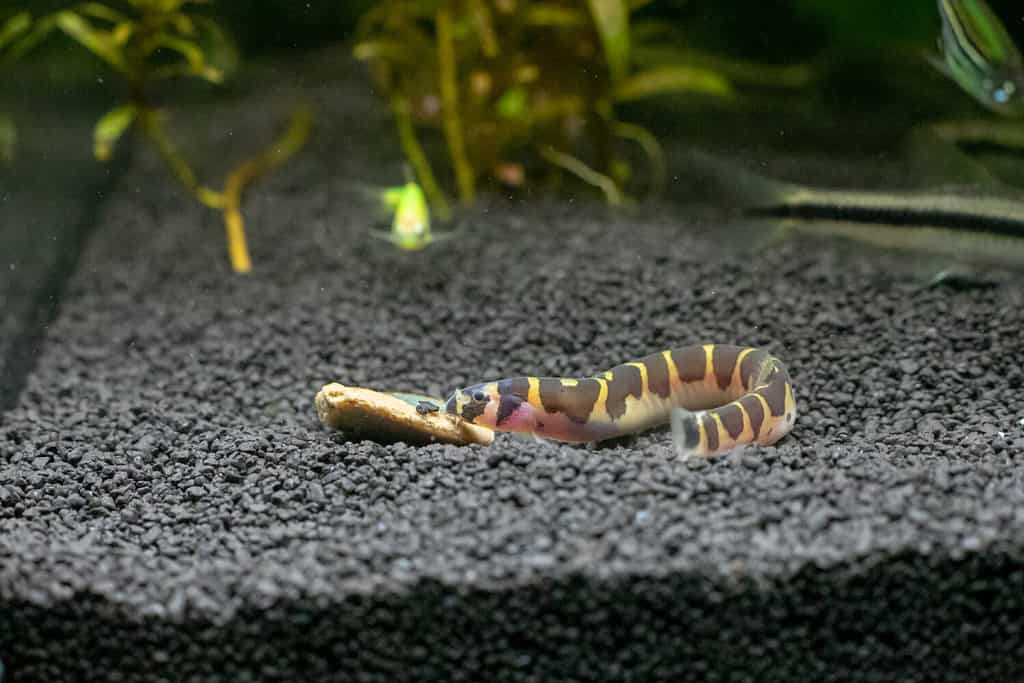
Kuhli loaches have an eel-like body and movement, which makes them fascinating in aquariums.
©Olga Chezhina/Shutterstock.com
If you are looking for an unusual-looking tank mate that pairs well with angelfish, the kuhli loach might be a good option. Kuhli loaches are easily recognized by their eel-like bodies and tiny fins. There are different species of kuhli loaches, with the P. semicincta being popular in the aquarium trade industry.
The P. semicincta species is often confused with P. kuhlii, which is a rare species that isn’t commonly found in captivity. Kuhli loaches reach a length of 3 to 4 inches and have striking brown and yellow banding. You will need to keep kuhli loaches in groups of five or more because they enjoy socializing with their own species.
Kuhli loaches are not the most active fish, but they display fascinating behaviors like burrowing. They enjoy foraging and burrowing in sandy substrates and like to hide under rocks and logs for most of the day. They are more active at night when the aquarium lights are turned off as they are nocturnal.
9. Mystery Snails (Pomacea bridgesii)
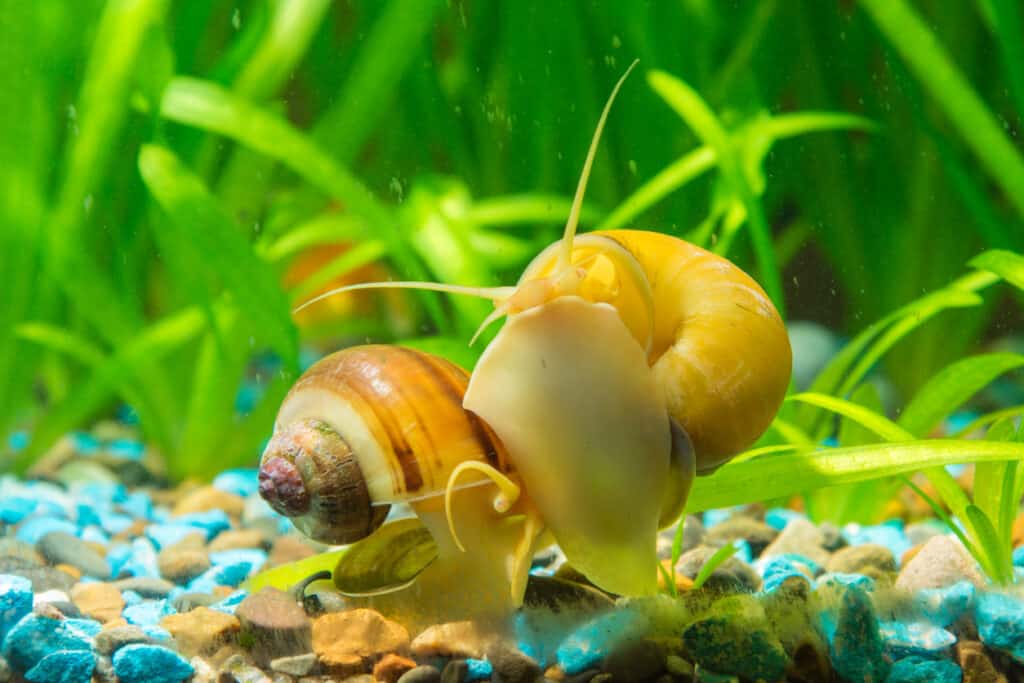
The mystery snail is a large snail found in a range of different shell colors.
©iStock.com/Madhourse
If you do not want to keep other fish with your angelfish, then the mystery snail might be a good choice for you. Mystery or apple snails are freshwater invertebrates that originate from South America. They are one of the largest freshwater snails kept as pets, reaching a size of 2 inches. They are peaceful tank mates who will get along well with angelfish while being easy to care for.
Mystery snails do not have to be kept in groups, so the number of mystery snails you keep with your angelfish is up to you. You can find mystery snails in an assortment of shell colors, like chestnut, gold, and purple. They do not have any special care requirements, aside from needing to be kept in freshwater.
10. Swordtails (Xiphophorus helleri)

Only male swordtails have the distinctive sword extension.
©topimages/Shutterstock.com
Swordtails are another live-bearing fish other than mollies which can be kept with angelfish. The Swordtail is named after their elongated caudal fins which looks like a sword. This sword extension is only seen in males, and the females look similar to mollies. Swordtails grow to a length of 3 to 4 inches, with females being slighter and larger.
Angelfish and swordtails can be kept together, although you should not keep swordtails on their own. You ideally want to keep them in groups of five or six because they are social. They are found in various colors and patterns, including orange, black, blue, green, and silver.
11. Blue Acara (Andinoacara pulcher)
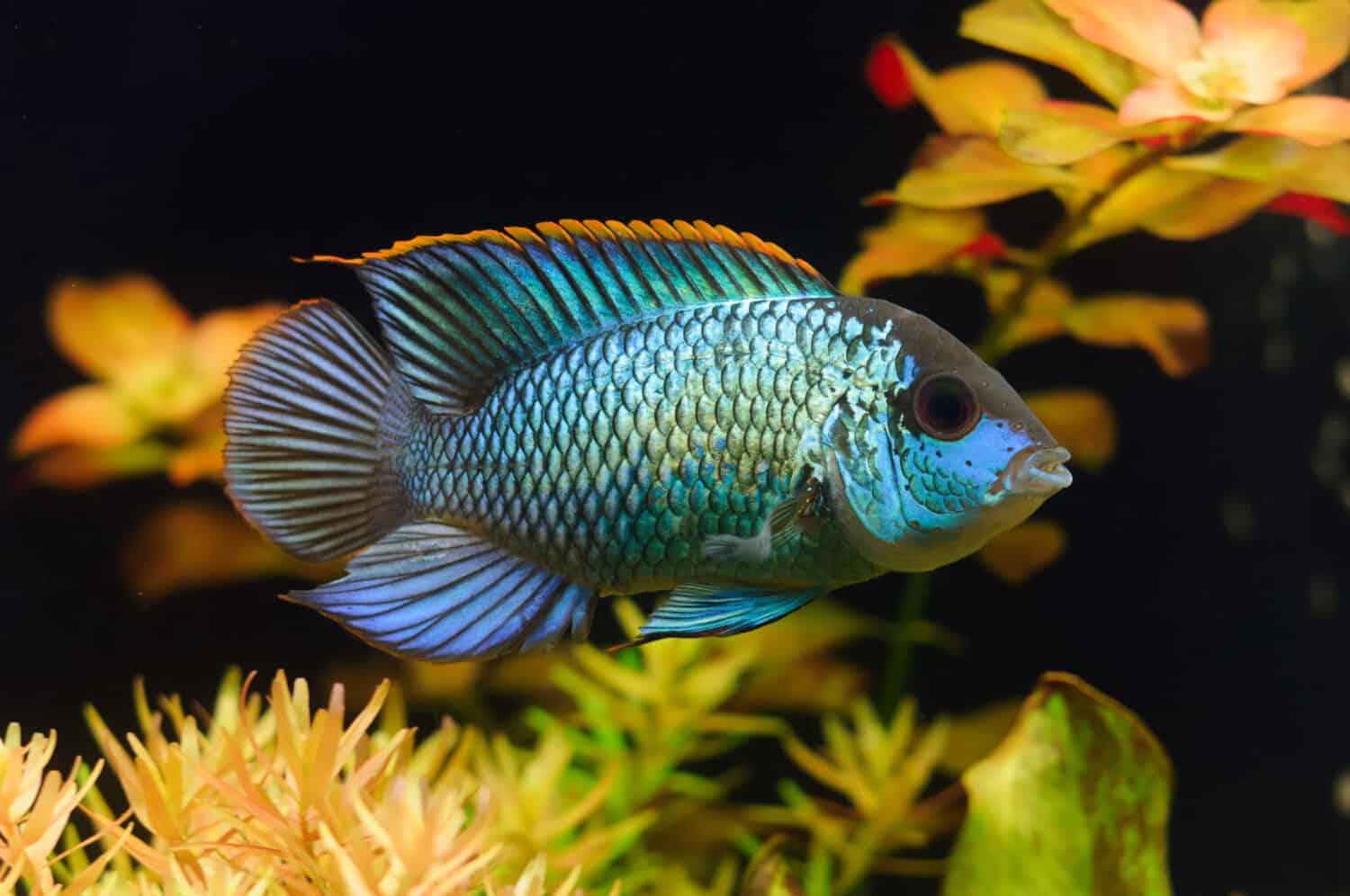
Blue acara has a striking neon blue coloration and elongated fins.
©tetiana_u/Shutterstock.com
The blue acara is a type of cichlid that originates from South and Central America. Their striking iridescent blue coloration is what draws many fishkeepers to the blue acara. They are medium-sized fish at only 6 inches long and pair well with adult angelfish. However, you will need to ensure that the tank is large enough to support both fish.
A 75-gallon tank can comfortably house a group of angelfish and a small group of blue acara. Keep in mind that the larger the fish are, the larger the tank needs to be. They can be kept within the same temperature range as angelfish, with 75 degrees being ideal.
12. Ram Cichlids (Mikrogeophagus ramirezi)
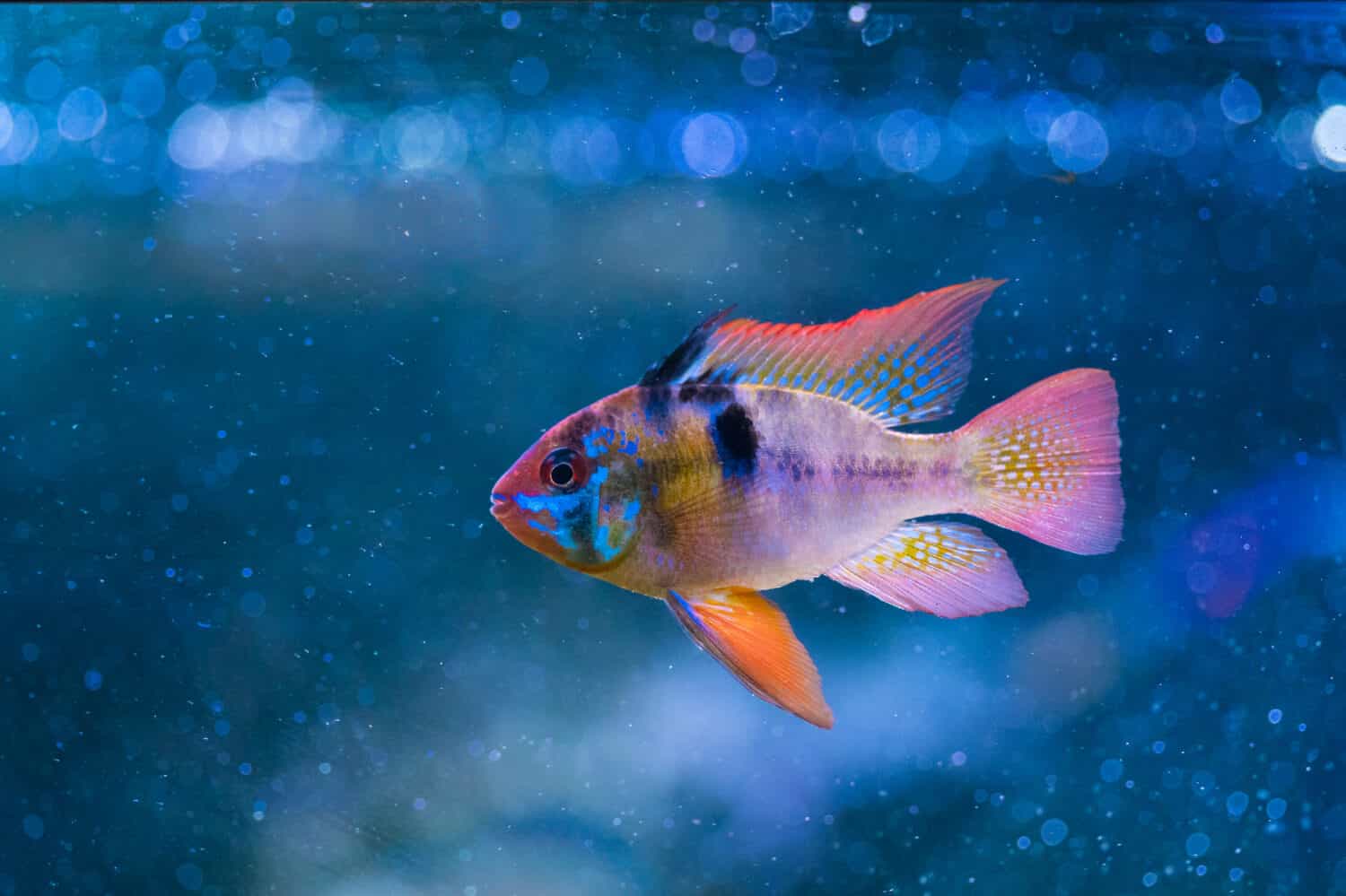
Ram cichlids are colorful dwarf fish that can liven up angelfish aquariums.
©veronika_tvrda/Shutterstock.com
Despite the ram cichlids’ territorial and semi-aggressive behavior, they can be housed with angelfish. Ram cichlids are stunning dwarf fish that are guaranteed to liven up any angelfish aquarium. They are found in many different colors and patterns and are sometimes referred to as butterfly or blue ram cichlids. These colors include shades of red, blue, green, purple, and orange.
Ram cichlids are not very big at only 3 inches long, with some only reaching 2 inches. They require a minimum tank size of 55 gallons when kept with angelfish and aren’t fussy about the setup. Ram cichlids rarely bother angelfish, although they can display aggressive behaviors during the breeding season.
13. Bleeding Heart Tetras (Hyphessobrycon erythrostigma)
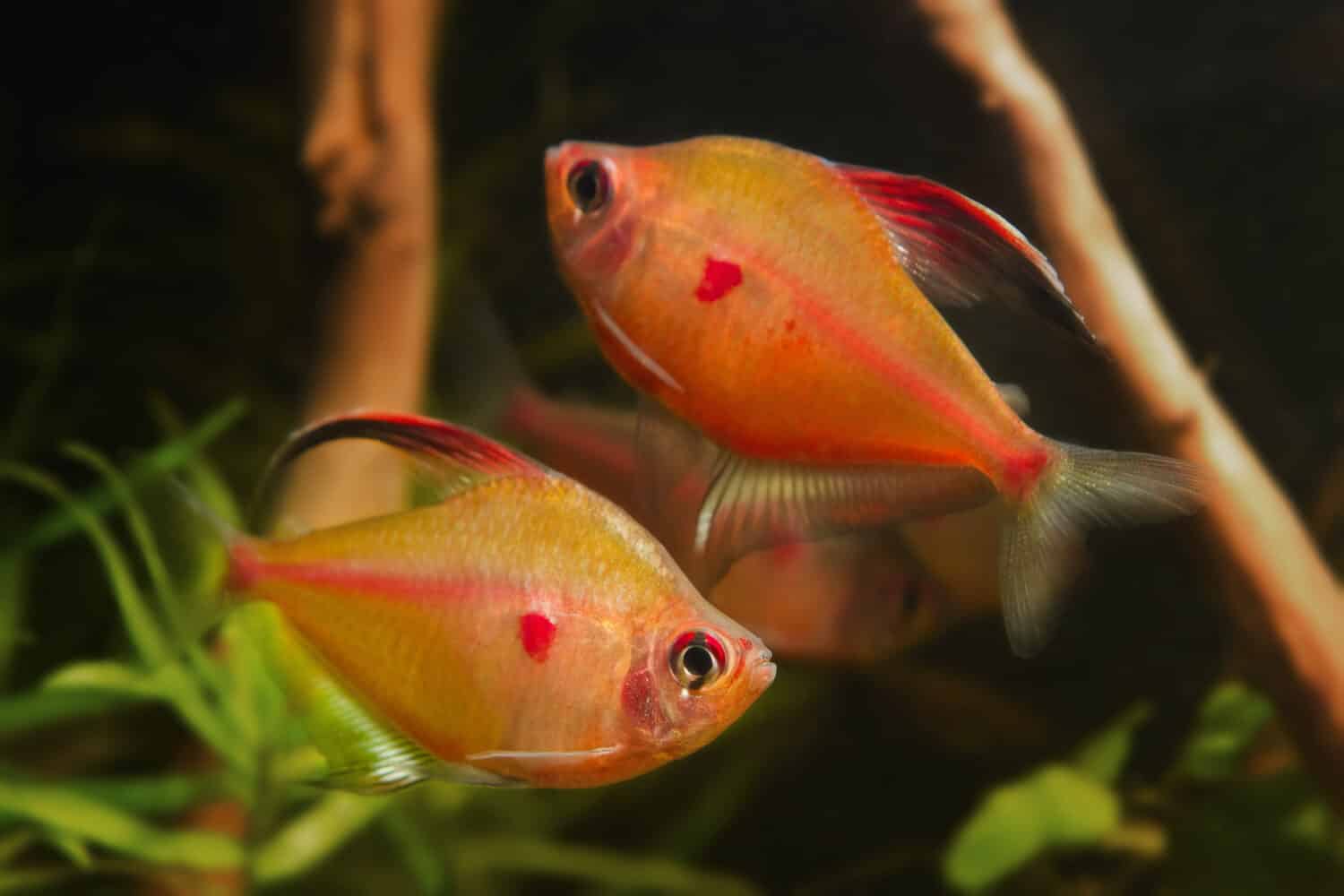
Bleeding heart tetras are named after the heart-shaped marking near their gills.
©Aleron Val/Shutterstock.com
As the name suggests, bleeding heart tetras have a distinctive red marking near their gills that fades across their bodies. They originate from the upper section of the Amazon River Basin in South America.
Bleeding heart tetras are not very large at 2 to 3 inches long, but still big enough to be left alone by adult angelfish. They are equally social and peaceful fish that need to be kept in groups of six or more for social reasons. Bleeding heart tetras are strictly tropical fish and tolerate the same water parameters as angelfish. Their lifespan is quite short at only 3 to 5 years, but can be improved with proper care.
14. Otocinclus Catfish (Otocinclus macrospilus)
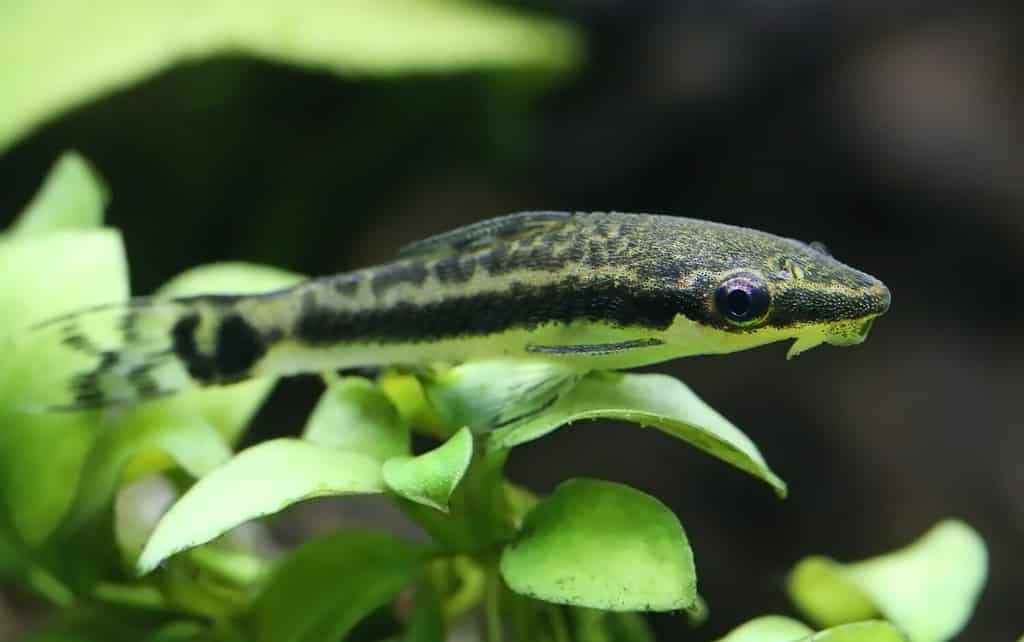
The Otocinclus catfish is a small bottom-dwelling fish that is known for their excellent algae-eating abilities.
©Swapan Photography/Shutterstock.com
Otocinclus is the genus name for freshwater catfish that includes over 17 species according to FishBase. The main species kept in aquariums are the O. macrospilus, O. vestitus, and O. vittatus. They are small catfish at only 2 inches long, with females being slightly larger. Otocinclus catfish go by many names, including oto’s, dwarf suckerfish, and dwarf Otocinclus.
Otocinclus catfish are native to South America where they inhabit slow-moving freshwater rivers. They are highly peaceful and social fish, so you will need to keep them in the same species groups of five or more.
In comparison to the other angelfish tank mates previously mentioned, the Otocinclus catfish is better suited for more experienced fish keepers. Otocinclus catfish are sensitive to changes in water parameters and aren’t very forgiving of beginner mistakes.
15. Boesemani Rainbowfish (Melanotaenia boesemani)
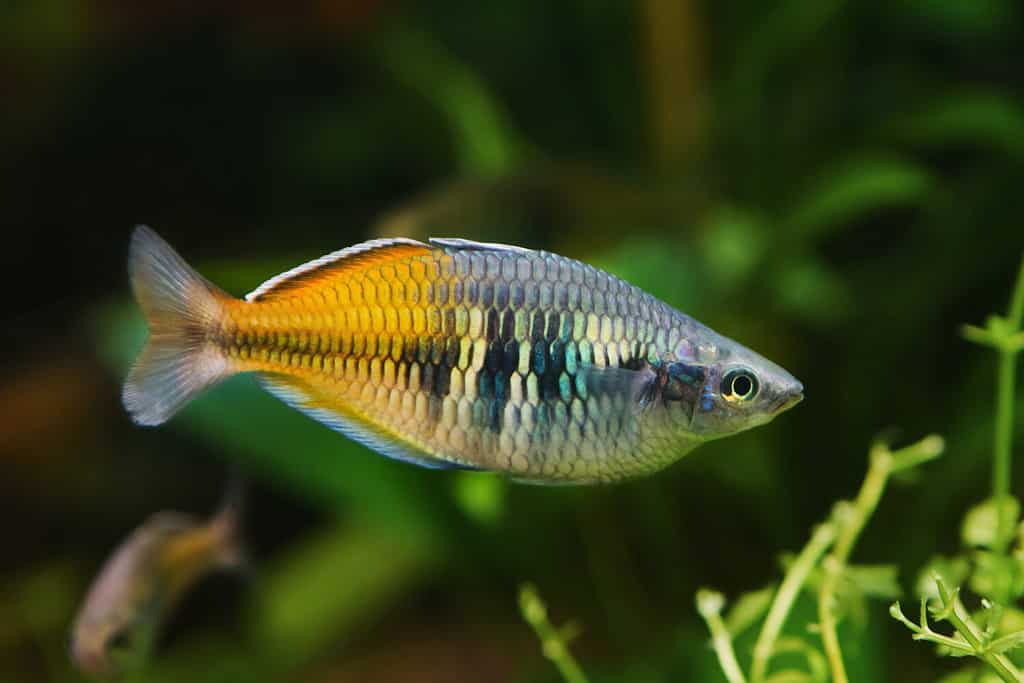
Boesemani rainbowfish are colorful fish known for their peaceful temperament.
©Aleron Val/Shutterstock.com
The colorful and popular boesemani rainbowfish is endemic to Indonesia with a limited habitat range of the Ayamaru Lakes. Boesemani rainbowfish stand out with their vivid yellow and blue bodies, with a medium size of 5.5 inches long. They are relatively hardy and peaceful fish that can be kept in large angelfish aquariums over 75 gallons.
Boesemani rainbowfish are not very demanding pets, but water quality is vital for their health. They need to be kept in tropical aquariums like the angelfish does, ideally at temperatures over 75 degrees Fahrenheit. If the water is too cold, Boesemani rainbowfish can become stressed or fall ill.
16. Keyhole Cichlids (Cleithracara maronii)

keyhole cichlids earned their name from their unique appearance.
©chonlasub woravichan/Shutterstock.com
Named after their unusual black keyhole marking on their flank, keyhole cichlids make colorful additions to angelfish aquariums. Keyhole cichlids have a vivid yellow to dull orange coloration paired with dark horizontal lines. They originate from slow-moving freshwater coastal creeks and river basins in South America. Keyhole cichlids grow to around 5 inches long as adults and can be kept with similarly sized angelfish.
Keyhole cichlids are peaceful and timid fish that prefer to keep to themselves in aquariums. They need to be kept in a spacious tank and ideally in groups of five. Keyhole cichlids enjoy having various live plants to explore and may become stressed in bare tank setups.
17. Pictus Catfish (Pimelodus pictus)
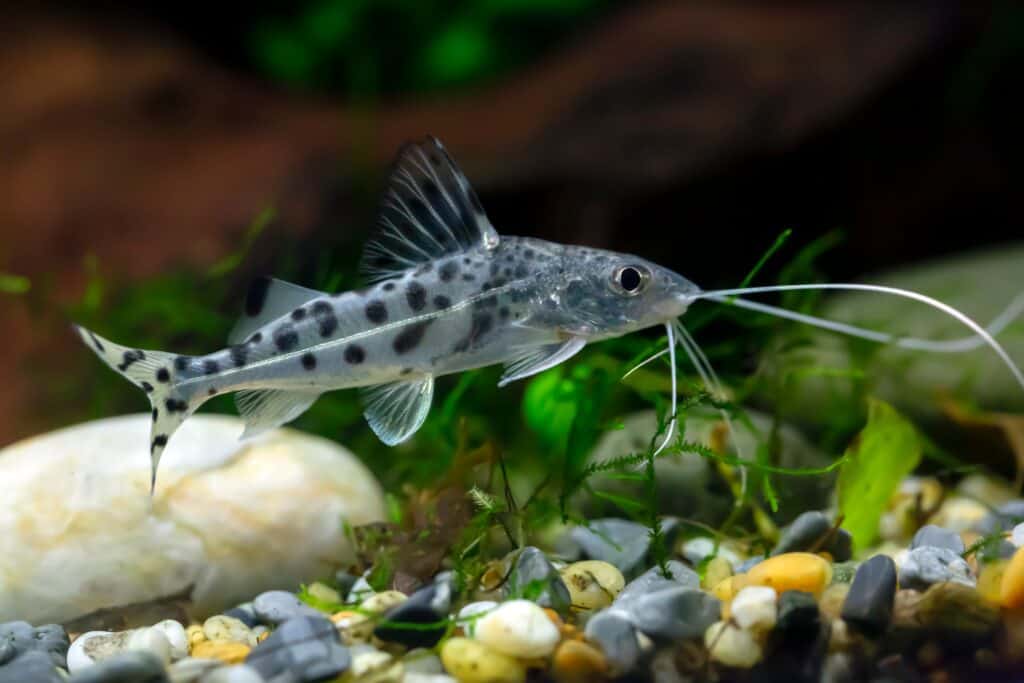
Pictus catfish can easily be recognized by their long barbels.
©boban_nz/Shutterstock.com
The pictus catfish is hard to miss at the bottom of aquariums with their spotted bodies and long whiskers. They are sometimes called angel catfish, and they originate from the Amazon River Basin in South America. Pictus catfish are bottom-dwelling fish that exhibit nocturnal behaviors. They are not very active fish but can still liven up angelfish aquariums.
Most pictus catfish grow to a length of 5 to 6 inches, so they should only be kept with angelfish if the tank is over 75 gallons. Although they do prefer to hide most of the day, pictus catfish will come out to forage and interact with other members of their group.
18. Kribensis Cichlids (Pelvicachromis pulcher)
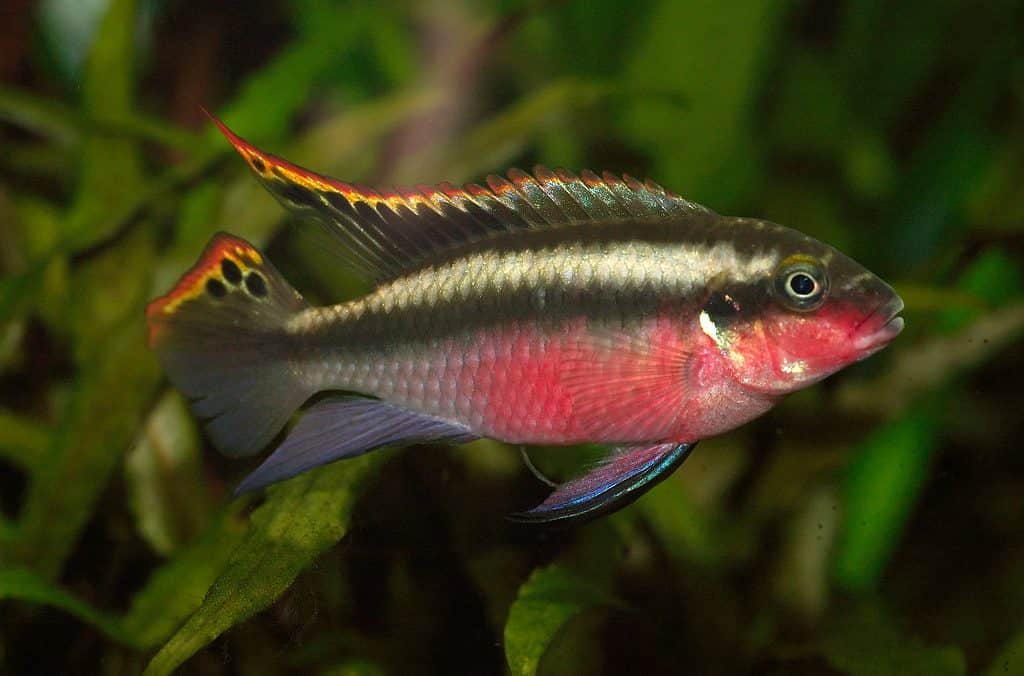
Kribensis cichlids are hardy fish that display territorial behavior.
©Tino Strauss, CC BY-SA 3.0 <http://creativecommons.org/licenses/by-sa/3.0/>, via Wikimedia Commons – License
One of the most colorful tank mates you can pair with angelfish is the kribensis cichlid. They are freshwater fish that originate from Central Africa and have well-mannered temperaments. As a type of dwarf cichlid, the kribensis cichlid is small in size at 4 inches long. However, they make up for their small size with their unique appearance of vibrant yellow and red.
Kribensis cichlids may show slight territorial behavior towards angelfish at times, but they usually coexist peacefully. They enjoy exploring and hiding amongst plants when they are feeling stressed. You can encourage kribensis cichlids to be more active by keeping them in groups because they are social fish.
Conclusion
Angelfish are an excellent choice for community aquariums for a good reason as they are compatible with many different fish. Some of the best tank mates for angelfish are bottom dwellers like the pictus catfish or bristlenose Plecostomus. However, angelfishes pair nicely with other peaceful schooling fish like the molly or bleeding-heart tetra. Most of the tank mates we mentioned in this article can be mixed together with angelfish. For example, you can keep angelfish in a community aquarium of bronze corydoras, dwarf gourami, and mystery snails.
Summary of the 18 Best Tank Mates to Pair With Angelfish
| Rank | Tank Mate |
|---|---|
| 1 | Mollies |
| 2 | Dwarf gourami |
| 3 | Zebra danios |
| 4 | Bronze corydoras |
| 5 | Bristlenose Plecostomus |
| 6 | Black skirt tetras |
| 7 | Rummy nose tetras |
| 8 | Kuhli loaches |
| 9 | Mystery snails |
| 10 | Swordtails |
| 11 | Blue acara |
| 12 | Ram cichlids |
| 13 | Bleeding heart tetras |
| 14 | Otocinclus catfish |
| 15 | Boesemani rainbowfish |
| 16 | Keyhole cichlids |
| 17 | Pictus catfish |
| 18 | Kribensis cichlids |
The photo featured at the top of this post is © Joan Carles Juarez/Shutterstock.com
Thank you for reading! Have some feedback for us? Contact the AZ Animals editorial team.




